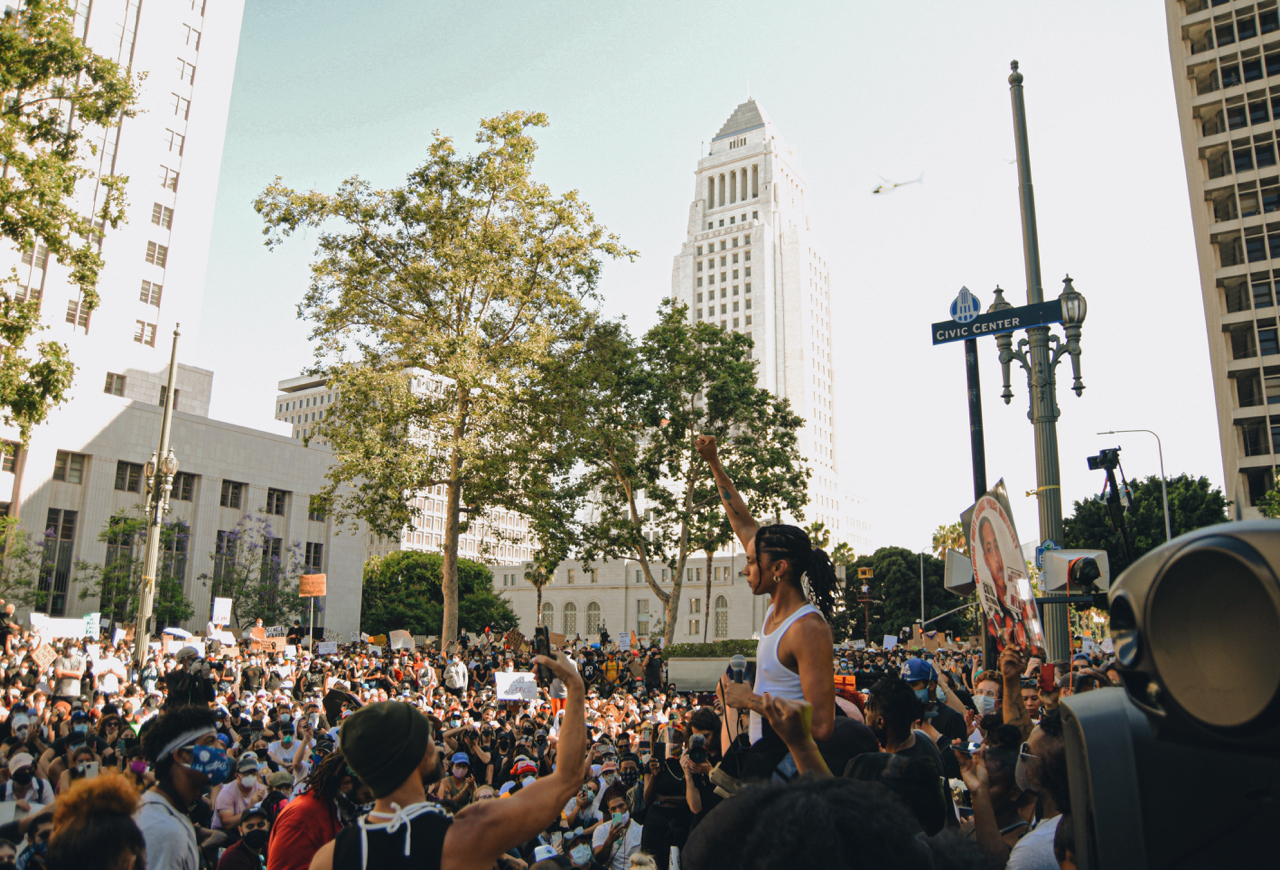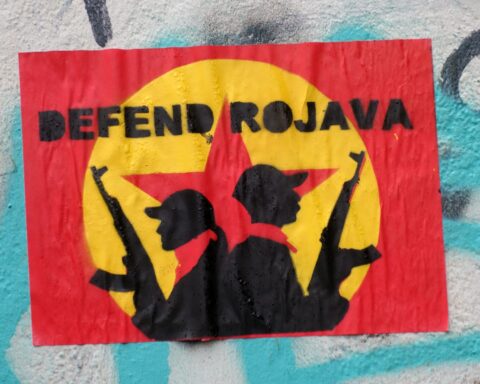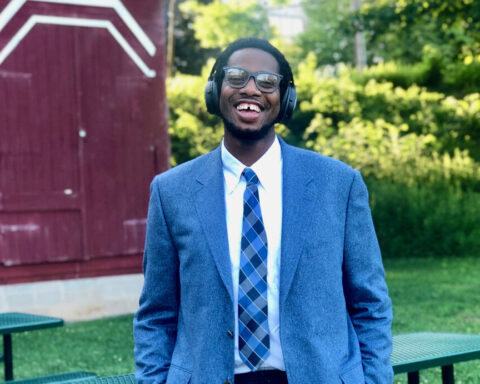Fueled by anger over the death of George Floyd, Breonna Taylor, and the countless other Black victims of police violence, demonstrations that erupted across the US and around the world are still persisting weeks after they began on May 26th. In a long-overdue reaction, protestors pour onto the streets at a scale of tens of thousands in some cities, demanding racial justice and tearing down confederate statues that until the past week, publicly glorified the endurance of white supremacy. The country has not witnessed such a level of civil unrest in response to police violence in decades. Over 25 cities in 16 states have enacted curfews in an attempt to inhibit demonstrations, despite accusations that the ambiguity of these curfew orders sets a dangerous precedent in the abuse of law enforcement power.
While the national media has been propagating the narrative of peaceful alliances between police officers and protestors, law enforcement has employed increasingly militarized attacks against demonstrators. This unprecedented aggression, followed all with little interrogation from the mainstream news, is what media critic Adam Johnson calls “copaganda.”
Copaganda advances the public perception of policing and can be seen everywhere from the news to movies and advertisements. This form pro-police rhetoric normalizes the presence and perceived necessity of law enforcement and distracts us from the reality that police reform has proved to be futile again and again over the last decades in the US.
The Progressive Era in particular, which spanned from the 1890s to 1920s, was characterized by municipal reforms that attempted to address corruption permeating city governments. This led to a more hierarchical model of governing and increasing bureaucratic intrusion from the state into poor people’s lives. Other progressive reforms in the mid 20th century, like those proceeding the highly influential court decisions Mapp v. Ohio and Miranda v. Arizona that established protection against self-incrimination, use of illegally obtained evidence, and other “improved” policing initiatives have been largely been ineffective in mitigating violence. After the death of Eric Garner in New York, and Michael Brown in Ferguson six years ago, extrajudicial executions by law enforcement still remain widely unscrutinized.
Information collected by research groups like Fatal Encounters and Mapping Police Violence highlight a disturbing reality; over 7,600 civilians were killed by the police in the US alone from 2013 to 2019. Of those numbers, 24 percent of victims were Black, despite that Black civilians make up only 13 percent of the US population. Less than 1 percent of officers were charged, and a fraction of this convicted.
As the death toll accumulates, calls for abolishing contemporary policing altogether have gained support. Reform has been proven to be unproductive in protecting Black people from fatal encounters with the police; no amount of racial bias training, civilian complaint review boards, body cameras or other surface-level efforts will change this.
But if reform is insufficient, then what are the alternatives? Abolitionists contend that to bring an end to the violence caused by police, it must be dismantled and the current criminological paradigm abandoned in its entirety.
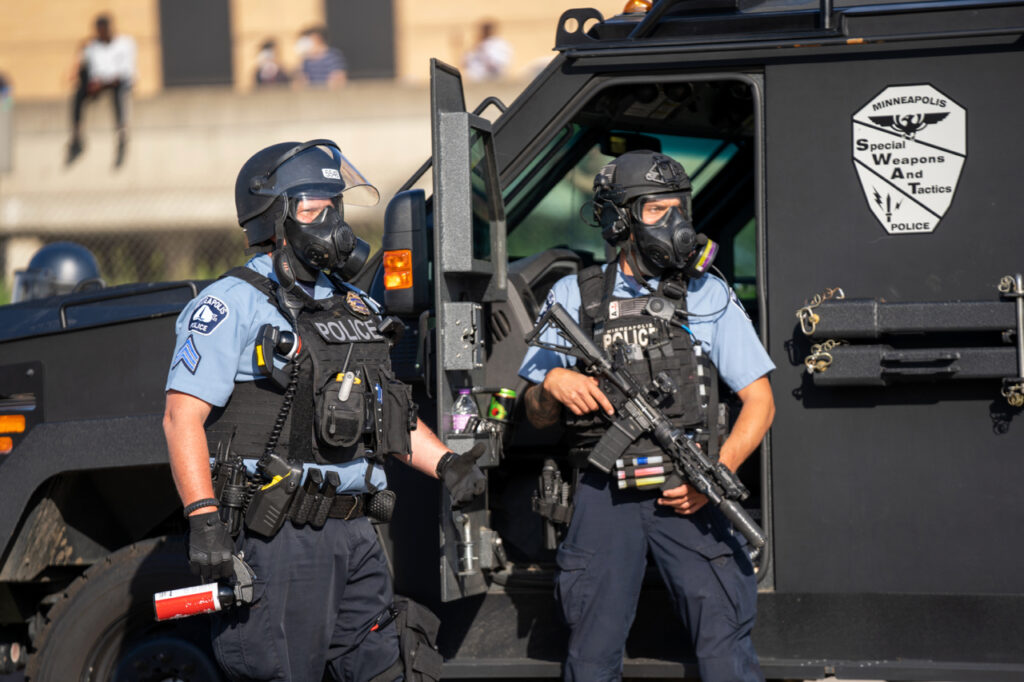
Racialized origins of American policing
As identified by abolitionists, including Opal Tometi who co-founded the Black Lives Matter movement, police reform has not successfully dealt with its race problem because racism has been a fixed structure within the creation and progression of policing in the US. The anger that stems from the most recent protests go beyond individual killings of Black civilians but rather with the racial elements driving the overarching system.
“Racism is embedded in the way that policing is done in this nation — and when you think about it historically, it was founded as a slave patrol,” said Tometi in an interview with The New Yorker, “The evolution of policing was rooted in that. People recognize that. So their frustration is absolutely about the policing and the criminal justice system writ large and the racial dimensions of it, and its lethal impact on our communities.”
The policing and prison system were not always inextricably linked in the US; incarceration emerged during the Colonial period from Puritans in the Northeast to punish their own community members and indigenous people who were seen as “political and religious offenders.” Early forms of policing, on the other hand, materialized in the South because wealthy white landowners relied on exploiting the labor of Black slaves. Ad hoc militia and mercenaries (“slave patrols”) were formally established in South Carolina in 1704 to suppress slave rebellions, hunt fugitives and further impose social domination against the enslaved population. Following the Civil War, policing in the South continued to operate in ways that mirrored its original purpose by enforcing segregation and disenfranchisement of Black communities.
The prison and policing complex were built on the premise of racialized social control, and how it stands to this day reveals it has not shed itself from its history of violent racism and Christian theocracy. Even after human slavery was abolished in 1865, the function of law enforcement had not fundamentally changed. Policing today still exists for the state to maintain its monopoly on violence and uphold historically racist values.
Arrests for violent offenses make up less than 5 percent of 10 to 14 million arrests a year, so most police work hardly involves investigating serious crimes. Rather, the vast majority of it entails aggressively policing minor, nonviolent crimes like illegal parking, broken taillights or driving with no insurance. When the police punish civilians for petty offenses often caused by circumstances of poverty, they punish civilians for their poverty and thus create the very conditions that lead to more crime.
Law enforcement in fact carries a poor track record when it comes to responding to major crimes like murder, rape and domestic violence. The “national clearance” for homicide in 2018 was 62.3 percent and a mere 33.4 percent for rape. A high ratio of police officers themselves are perpetrators of domestic violence and murder, their own crimes overwhelmingly kept out of publicity. In 2014 when NYPD officers collectively lowered their policing to a bare minimum to protest anti-police sentiment, the city saw a drop in major crime during this period.
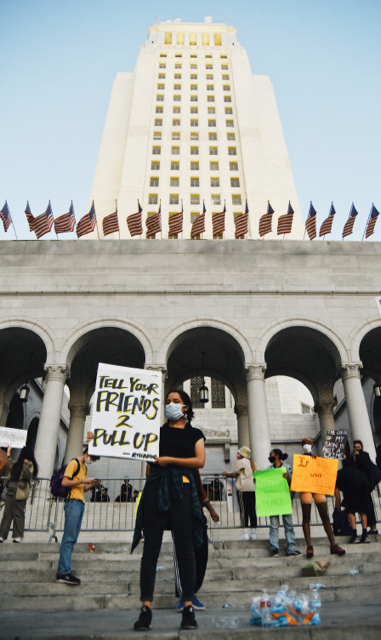
Demonstrations in Los Angeles (Gehrig Urbano) 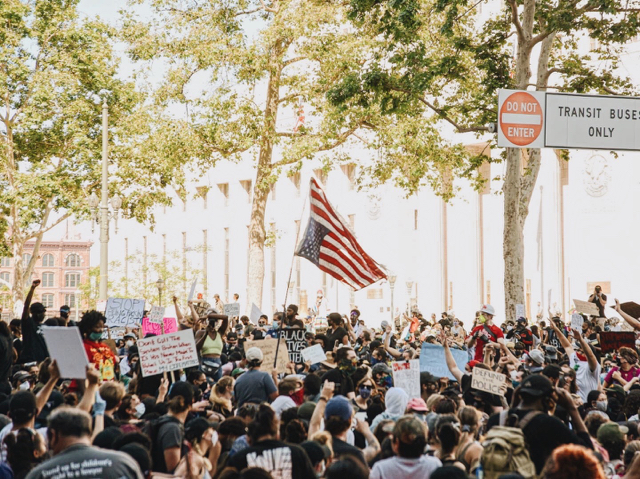
Demonstrations in Los Angeles (Gehrig Urbano) 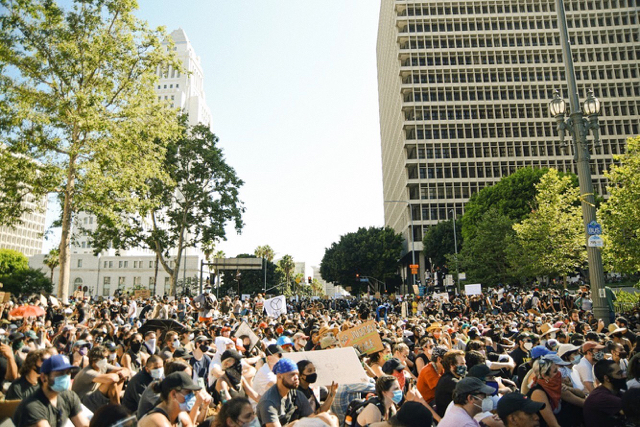
Demonstrations in Los Angeles (Gehrig Urbano)
Proponents of police abolition argue that these are only a few of the countless illustrations of how contemporary policing is making already marginalized communities less safe. Despite all this, funding for policing in the US has tripled to 115 billion dollars in the last four decades while education, housing and youth services saw their budgets slashed.
“How are these people going to unleash even more police officers in our communities, when clearly we are seeing that enough is enough?” Tometi was baffled by the New York City government’s decision to increase the NYPD budget by a hundred million dollars after the death of Eric Garner in 2014.
“This over-policing of largely poor communities, which are largely people of color because poverty is racialized in this country, means that we are the ones interacting with law enforcement more.”
The search for alternatives to policing begs the search for alternatives to imprisonment and ultimately the dissolution of its capitalist economic incentives which the former all fortify. One cannot examine the abuse of power by law enforcement agencies and correctional institutions without scrutinizing the lucrative business behind it and naturally how this impacts policy-making.
The criminal justice system as it exists today generates revenue for municipalities and corporate entities through collecting fees for minor offenses, civil forfeiture as well as public-private partnerships with for-profit prisons, prison service providers and bail bond companies. This leads to special interests in ensuring criminal justice is “reformed” in ways that continue to punish people and keep poor communities in place, rather than rehabilitate offenders and heal victims of crime.
Private correctional facilities like the GEO Group and CoreCivic (formerly called CCA) altogether make up the 4.8 billion dollar industry, and have for decades, worked with the American Legislative Exchange Council (ALEC) to pass over 85 bills privatizing prison-related services and enhancing the punishment of nonviolent crimes. In 2010, ALEC engaged in secret meetings between Arizona’s state legislators and CoreCivic to draft what became SB 1070, Arizona’s notorious immigration law. This was partly to ensure private prison facilities would have an incoming “flow” of immigrant detainees.
The evidence is clear — corruption within the criminal justice system has no limits and attempts at reforming it are polluted by corporate lobbyists and special interests.

New Haven protestors take over highway (Helena Chen-Carlson). 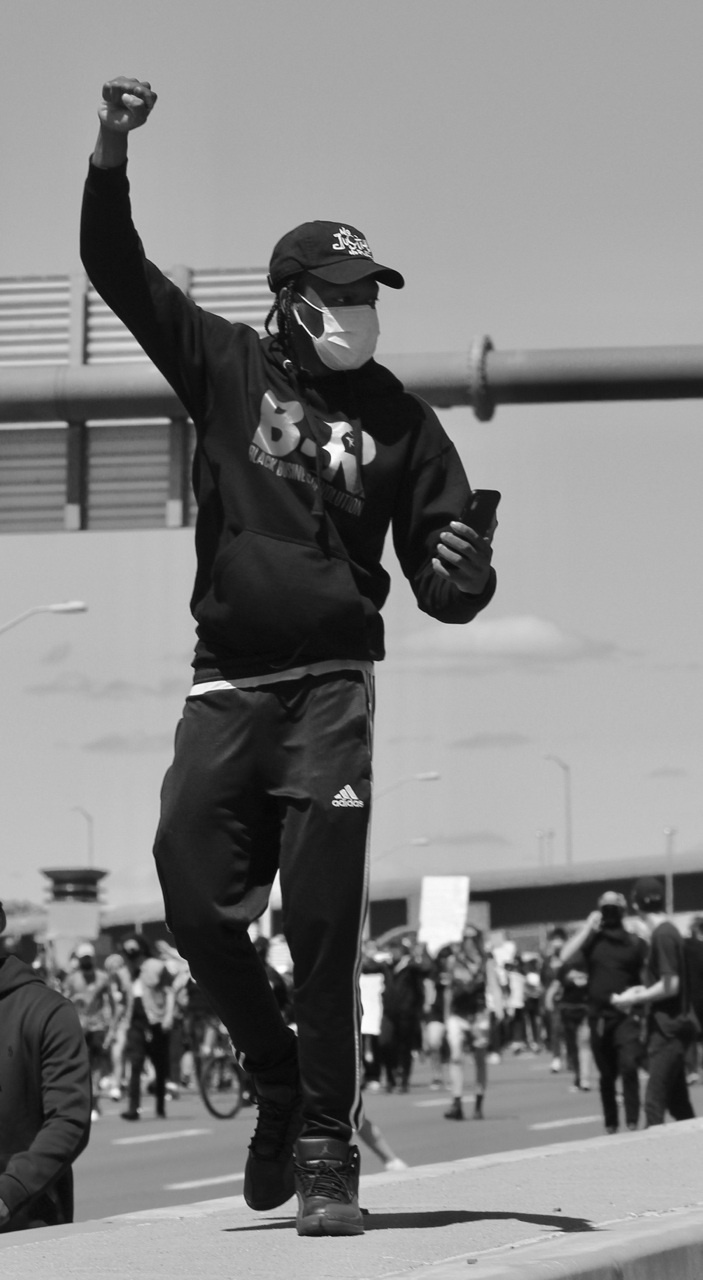
New Haven protestors take over highway (Helena Chen-Carlson).
Abolition and what it entails
Abolition of policing and incarceration means ending the physical structures that punish and confine people as well radically transforming our understanding of safety. In a more expansive sense, abolition can direct the policy changes that lead to deconstruction or construction of systems in ways that eventually eliminate a society’s reliance on police and imprisonment for protection. Reformative policy changes, on the other hand, differ in that they hinder abolition by legitimizing the perceived necessity of oppressive institutions while allocating more resources towards empowering them.
Coalitions like the Movement for Black Lives which formed in 2014 call for retroactive decarceration and defunding of police departments across the nation. The resulting surplus of funding should instead be redirected towards education, social care and other life-affirming institutions. Among its other demands are to respect protestors’ rights, decriminalization of Black political activity, direct democratic control in the investments and infrastructures in Black communities to be determined by Black communities themselves. This includes universal healthcare with comprehensive services like mental health, reproductive, child and LGBTQ-inclusive care.
Dismantling of law enforcement power is more straightforward than what its replacement would look like. This leads us to the question that follows: how will we protect ourselves and our communities without policing?
“I’m certainly not talking about any kind of scenario where tomorrow someone just flips a switch and there are no police,” said Alex S. Vitale in an interview with NPR last month. His book The End of Policing that came out in 2017 examines the failure of reform and challenges the need for police.
“What I’m talking about is the systematic questioning of the specific roles that police currently undertake, and attempting to develop evidence-based alternatives so that we can dial back our reliance on them.”
Vitale thinks that this dial-back is going to look like a series of local budget battles, with campaigns put forth to divest from police departments and their interfering presence in communities.
“These are folks who are saying concretely: ‘We don’t want police in our schools. We want that money spent in ways that help our children, not criminalize them. We don’t want more money for overtime for narcotics officers. We want actual drug treatment programs, safe injection facilities, things that will help people.’ So that’s what this looks like. It’s about rallying city council members and mayors around a new vision of creating healthier communities.”
Without policing, however, society would need strong self-organization and independent committees in place to mediate and react when conflict arises. Autonomous forces do exist in the US and across the world who rely on decentralized, mutually supportive mechanisms to respond to even violent crimes in the community without involvement from the police. Groups like Sista’s Liberated Ground (SLF) and Safe Outside the System: The SOS Collective are models to delve into in imagining alternatives to a centralized policing system.
It’s easy to dismiss calls for abolition as out of touch and unrealistic, but a prison-free, police-free society is far from unattainable. One need only to look at how the last two weeks of sustained action have resulted in a commitment to defunding the Minneapolis police department. This is a small step forward in the long road towards abolition but opens up a world of possibilities in experimenting with new models of public safety.
Outside of the US, we can also look towards Rojava, the autonomous region in northeastern Syria for models in societal self-direction. Its Communal Defense Committee consists of two forces: the Assayish who protect on a “city” level and the HPC (Civil Defense Forces) who are trained to protect on a “community” level. This system reduces the possibilities of monopolizing power because anyone can volunteer through a roster system including women who make up 40 percent of the force and, likewise, are important sources of civil protection.
Restorative and transformative approaches to justice in replacement of capital punishment would use non-hierarchical dialogue between the community, victim and offender instead of exacerbating the dichotomy between involved parties as our current prison system does. This allows for a deeper understanding of the circumstances surrounding the crime, and in how to heal its victims and avert recidivism. Further preventative measures can include fostering a greater collectivist culture that encourages participating in community service, mental health care and even “anti-crime” architectural and urban design which have shown to drastically reduce crime in implemented spaces.
The tragic consequences of police reform have been immense and Black communities continue to bear the brunt of its terrorism. How many more people will have to die in our fruitless attempts to mend a system whose corruption lies at its very existence? This can end now — it must end now.
It’s easy to dismiss calls for abolition as out of touch and unrealistic, but a prison-free, police-free society is far from unattainable. One need only to look at how the last two weeks of sustained action have compelled the Minneapolis City Council to commit to defunding the city’s police department. This is a small step forward in the long road towards abolition but opens up a world of possibilities in experimenting with new models of public safety — models built by those who form the bedrock of their own community, understand its intricacies and all the reasons to cherish the health and wellbeing of its members.
If you enjoyed reading this, help support us by sharing it with others.
